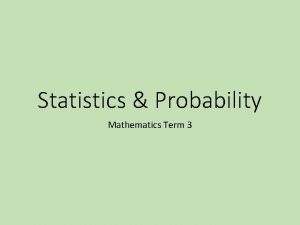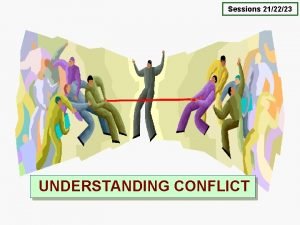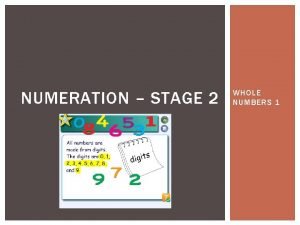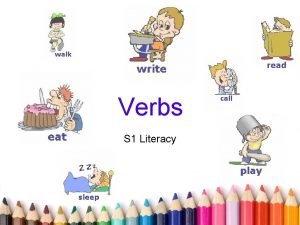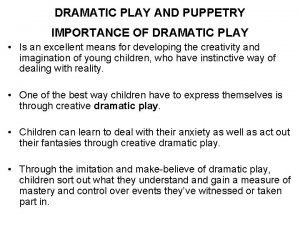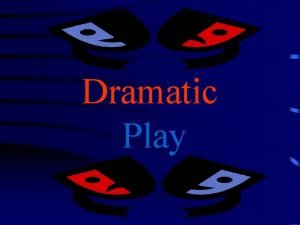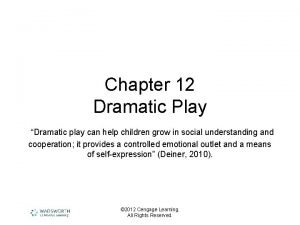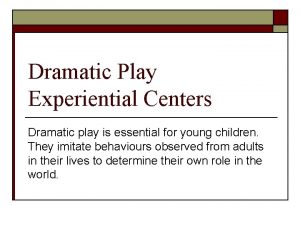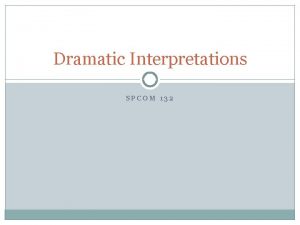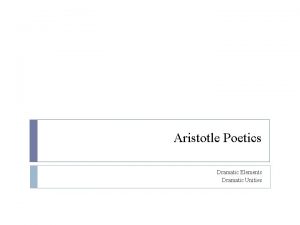Creative Intentions and Dramatic Purposes Meanings and Summary

















- Slides: 17

Creative Intentions and Dramatic Purposes Meanings and Summary

DRAMATIC PURPOSES

To Provoke • To rouse or stir up strong feelings or thoughts by forcing the audience to think and respond to a performance.

To Celebrate • To recognise the strength or development of something or someone through performance. The act of celebration recognises that something is important to a community.

To inform • To provide information through a performance to help an audience make a better decision in their own lives or to gain knowledge through watching a drama

To Challenge Viewpoints • To provide the audience with different ways of thinking about a complex problem or an issue in society. Dramas help us increase our empathy towards others and build tolerance.

To Raise Awareness • To highlight an under-represented aspect of society or an issue and to show an audience the importance of recognising and responding to it

To Educate • To teach the audience something that they didn’t previously know and to help influence them in positive ways. This is often done through a genre called ‘Theatre In Education’.

To Entertain • To distract the audience from the worries of the real world and to allow them to enjoy the situations and adventures of fictional characters onstage. This is called ‘escapism’. Entertainment often allows the audience to take on a more passive role in theatre although this is changing as more interactive performances are created.

CREATIVE INTENTIONS

Theme • An idea or concept that connects several pieces of art.

Issue • A dilemma or problem that is to be explored or dealt with creatively.

Response To Stimulus • An object or idea that inspires an artist to create.

Style and Genre • A type or form of drama that both the audience and artist already knows and a set of techniques that you would expect to see or find in that form.

Contextual Influences • The influences of the environment or the life of the artist that have some effect on the work that they create.

Collaboration with Practitioners • The act of working with others can often produce new and exciting ideas or a different way of ‘seeing’ an issue or theme.

Influences by Practitioners • Looking at the work of other practitioners can often help to develop an artist’s style or own artistic identity. They can often inspire a developed way of working.
 Creative intention
Creative intention Reflective phrases
Reflective phrases Examples of learning intentions
Examples of learning intentions Learning intentions and success criteria examples
Learning intentions and success criteria examples Learning intentions and success criteria for mathematics
Learning intentions and success criteria for mathematics Learning intentions examples
Learning intentions examples Plans intentions and predictions
Plans intentions and predictions Thoughts and intents of the heart
Thoughts and intents of the heart Jabberwocky alliteration
Jabberwocky alliteration What is a conflict of interest
What is a conflict of interest Persuasive writing learning intentions
Persuasive writing learning intentions Whole numbers chart
Whole numbers chart Basking shark poem
Basking shark poem Objectives of fractions
Objectives of fractions Half turn symmetry
Half turn symmetry Verb viper
Verb viper Poetry learning intentions
Poetry learning intentions Poetry learning intentions
Poetry learning intentions




